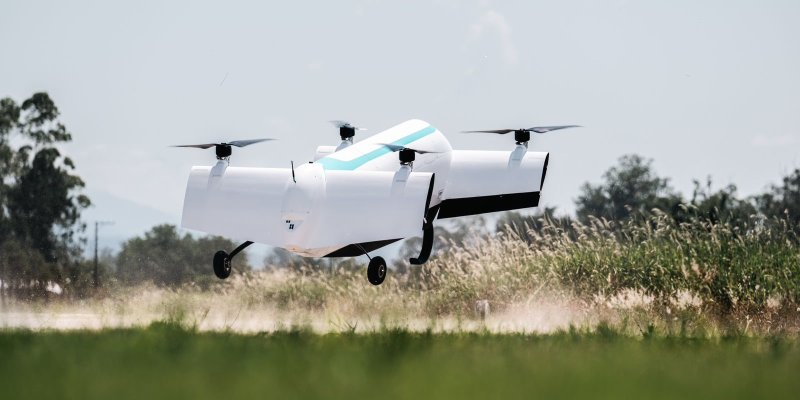The Moya eVTOL, developed and produced by Moya Aero, has already made its first flight and started a testing campaign to seek certification for commercial use. The aircraft, designed for professional applications, will be on display for visitors of Expo eVTOL, an event organized by MundoGEO and to be held at Expo Center Norte – Yellow Pavilion, in São Paulo, between May 21 and 23.
The aircraft is 5.1 meters long, has a wingspan of 7.4 meters and is 1.8 meters high. It is built mainly from composite materials, such as carbon fiber and epoxy resin, using lamination molds, resulting in less weight.
The fuselage design of the Moya eVTOL was designed to reduce drag and increase efficiency. According to the company, this design can reduce drag by 50% compared to other lift+cruise eVTOL configurations.
The aircraft has 100% electric propulsion, based on 83 kWh LiPo batteries that power the four rotors, two at the front and two at the rear, each with a power output of 62 kW.
These configurations give the Moya eVTOL a range of 110 km and an autonomy of 42 minutes, operating at a cruising speed of 150 km/h.
The aircraft was developed to be multi-mission, operating in the fields of logistics, agriculture and mapping. This flexibility is an outstanding feature of the Moya eVTOL and it is no coincidence that it has already attracted the attention of several customers from different sectors. In Brazil, for example, Helisul has shown interest in 50 aircraft for cargo transportation and Fototerra intends to use the equipment for aerophotogrammetry.
For cargo operators, the aircraft provides a payload of 200 kg, allowing for a wide range of logistical possibilities, far superior to ordinary drones that perform this type of task. In the case of agricultural use, the Moya eVTOL can carry up to 160 liters and spray 105 hectares on one battery charge.
The prototype aircraft began to be built following a US$ 2 million grant from FINEP, the Brazilian government agency dedicated to supporting innovation and research. And the company’s expectations for the next ten years are to have revenues of around US$ 2 billion and projected sales of around a thousand units over the period. Entry into service is scheduled for 2026.

